Also interesting is that the travertine deposits capture a lot of vegetation, and a variety of leaf imprints and such can be found in the rocks here.
|
We left the Firestone Center and drove much of the way across Costa Rica to more or less the northeast from the southwest. We ended up near the town of Aguas Zarcas on the Caribbean slope. The name Aguas Zarcas is a bit hard to translate, but it is the type of water that comes out of mineral-laden hills and turns the river rocks an orangish color. In coal mining country in the US this can be caused by acid mine drainage and is called red dog. In this general area there are some significant travertine deposits. Travertine is just another form of calcium carbonate (see limestone) and more or less looks like cave formations but right out there on the surface. However, some of these deposits are quite thick, and here there is even a quarry mining the deposit to make fertilizer. In the photo above, what caught our attention was the soil layer in the stratigraphy. Making a guess, and it is only a guess, the travertine was being deposited layer by layer, then a land slip covered it in soil, and then the travertine set about putting down more layers on top of the soil. This would generally be called a paleosol, but not sure that exactly applies here. Also interesting is that the travertine deposits capture a lot of vegetation, and a variety of leaf imprints and such can be found in the rocks here. But what does this have to do with caves? Well, travertine is soluble just like limestone, and our guide for the area, the eminent volcanologist Carlos José Ramírez Umaña, knew of at least one opening in the hillside. We took a look, and although Don looks a little lost here, he eventually crawled in and found it to be a short cave. Nothing too much came from this, although a gorgeous lesser dog-like bat (Peropterx macrotis) was seen in there and so I had to get a quick photo. These are tiny little insectivorous bats that top the scale at a whopping four grams, or less than the weight of two dimes. When looking for caves, it is often wise to follow the water. Our first effort at doing this came up with a waterfall and what looks like a cave under there. Turns out it was just a good place for Don to wash his feet, although really quite scenic. Our last bit was to check out a spring near the bottom of the travertine quarry highwall. We thought this might have some potential, but the opening was far too small and although it moved a lot of water there was no airflow coming out. And after a fine day afield...
1 Comment
After finishing up all our work with the bat and sea caves in the southwest of Costa Rica, we spent our last night in that region back at the Firestone Center. Not the least of the reasons was for access to a washer and dryer, as another day and you'd know we were coming before we entered the room and know we had been there long after we left. So here are a few more photos from the Firestone. The first is an interesting scene on a leaf. This blue morpho (Morpho sp.) was patrolling a trail when I saw it and I was able to follow it until it landed. And when it landed the leaf was occupied by obvious predators of butterflies, harvestmen. But I think in this case the butterfly would be just a little on the large size for these guys to go after. Side note, the species of this butterfly is likely Morpho Menelaus, but the pattern is quite similar to Morpho didius which I do not believe to be found in Costa Rica. Anyway, when they close their wings the blue disappears and they have the brown with eye spots pattern on the ventral side of the wings. At the Firestone Center we have a lot of peccary. They are notoriously near-sighted and even when pretty close can't seem to discern exactly what is going on unless you wave your arms or something. But they also have a reputation for being grumpy leaning toward aggressive when you get too close. I saw these collared peccary along the trail and they just kept getting closer and even when I was moving they just kind of shook their heads and didn't run off. I took a photo and then took a little detour around them lest I get chased up a tree or something else less than heroic. At night, I had to go into the forest to check on the mosquito trap. It was hanging in a tree down by the Rio Cacao and pretty close to the Ecology Center. On my way there, I spotted this Northern cat-eyed snake on the ground in the yard outside the Ecology Center. They are fairly thin snakes, but when I got close it puffed itself up to probably more than twice its normal width. And while not a dangerous snake, they are rear fanged and do have a venom, but even so you can pretty much pick them up and move them out of the way if needed. Of note, this image looks a little odd since it was taken with the wide angle lens I had on my camera to photograph the mosquito trap. I was only a few inches from the snake taking the pictures, which gives it an unusual look. And finally, one of the things we have been working on at the Firestone Center is to figure out what mosquitoes we have and which species are in which habitats. This has been a struggle as catching them in homemade traps hasn't been very successful.
Here you see the latest model of the Dynatrap, a neat little thing that was a light and a fan (sucking inward) to attract and suck in mosquitoes. The old model had to be plugged into an outlet, which unsurprisingly are not readily available out in the jungle. This model was designed to work with an external battery, and early results are quite promising that this will be our go-to mosquito catcher in the future. Playa Ventanas is a nice little tourist beach in southwestern Costa Rica on the Pacific side. It boasts a large expanse of sandy beach and while not entirely safe it is more suitable to swimming than in some places where the currents can really be dangerous. We stopped by as there is a fairly well-known sea cave there and wanted to check it out. But of course, we stopped and sat in the shade for a bit like normal folks do just to enjoy the place a bit. One doesn't have to go far to find the cave, as it is pretty much just to the left of where I was standing when I took the beach photo above. Easy peasy! And this is what you see looking at the highwall. The hole on the left seems to be connected to the larger entrance on the right so probably all just the same cave. But why not just go in and find out? What kind of cave explorers are we anyway? So looking into the larger opening you find that you can see right through the hill and out to the ocean. Pretty long cave, so surely Don will explore it and map it and study it until it gives up all its secrets. It should be noted here that Don is in the cave. Technically anyway. But where is his hard hat and light? And gear? Seems a bit timid about things. And like Sir Robin in Monty Python and the Holy Grail, He bravely ran away. So what is going on here? Why am I asking so many questions? For an answer, here is a short video of the inside of the cave: So, as can be seen the inside of the cave was less than tourist friendly. We were there too close to high tide to go in there, although I understand that things are quite a bit more calm at low tide, and we plan to return with better timing at some point. Anyway, there was no need for caving gear as it was clear from the start that we wouldn't be going in there. So we hiked down the beach to the other rocky area to see if there were any more caves nearby. We didn't find anything else enterable, but at the rocky point where the high tide prevented further shoreline exploration, Don hung out for a while. It was, overall, a pretty nice place to do so. And finally, for those who like their photos a little Outside Magazine-ish, I goaded him into posing a shot. After this bit we headed on down the road.
After our visit to Campanario, we headed back to the Firestone Center in Baru, Costa Rica. The route took us by the sea cave where we had previously done some work, so decided to give it a bit more attention, with installation of the ammonia sampler as well. We only had to go into the chamber with the big bat colony once for this, so figured it would add a lot of data to our bat cave work without much bat disturbance and could just use red headlamp lights for the roost work. First up is Guy with his contraption for automatic sampling of ammonia over the course of a programmable time frame. This thing worked flawlessly in what can be called less than ideal conditions. We also did more carbon dioxide sampling at various places in the cave. And finally, the airflow. It is one thing to have a set of numbers placed on a surveyed map which show things at this point or that point, but it is even better to have those numbers with an idea of why they are what they are. By using smoke from a vaping machine that Guy created we could essentially map the airflow patterns and speed without introducing anything harmful to the cave environment. And, well, that is going to have to be all for now. I will finish blogging this trip after I return home as while it has been difficult at times to do so from here, after tonight it is impossible to add more. But we have been to some pretty interesting places, and still have two days to go, so look for a continuation of posts in a couple days to catch up on the final bits from the trip. So for our last night at Campanario, Guy and I decided to just head over to the spot above the cave with the benches and watch the bat flight. This is just a really nice way to have a great wildlife experience while the sun goes down and darkness arrives. Birds stop calling and frogs start up. Day insects find a hidey hole and the night insects come out. And the bats wake up and fly out of the cave. Okay, I gotta say here that "bats wake up" is a bit of a mystery to me. I have been in hundreds of tropical bat caves and at any point, with lights out and even before they know I'm nearby, they always seem to be awake. Cave bat colonies are never quiet and sometime really quite loud. You can turn your light off and sneak up on them from a long ways off with a dim red light and still hear them making a racket three turns of the cave passage before you get there. Makes me wonder if the bats ever actually sleep. Okay, back to the cave. Earlier, we had seen a black hawk sitting on a downed tree with bats flying by trying to score a late evening snack. I never got a photo of it going after a bat but it clearly wanted one. So as it was getting pretty dark, with just a hint of yellow-orange in the clouds out on the ocean horizon, I took one last Campanario Bat Cave Photo. I end this set of blog posts with a Pteronotus flying out from the cave and passing between me and the ocean. A flash went off in the night, and Guy and I headed back to the Station.
The owner of the Campanario Biological Station, Nancy Aitken, decided that since we had the cave entrance rigged it would be an opportunity for her to check on her bats personally. Nancy is amazing in a lot of ways, truly one of the best of the best, but most of her visits to the cave are for taking students and other visitors to the station to see the bat flight in the evening from benches above the entrance, not going down to the cave. The cave itself is, for the most part, a place very few should visit. The wildlife watching opportunity outside the entrance, is something not to be missed. The cave is obviously an important breeding site for Pteronotus in Costa Rica, and for the most part they will continue to do just fine without anyone entering the cave. While watching the bat flight is really fun and doesn't bother the bats at all. It's a win-win. So we went out one afternoon at low tide, and after finishing up with our work and pulling out Guy's ammonia sampler, Nancy got to check on her bats. Now I am not going to tell you her age, but let's just say most with that many candles on their cake would not be dropping down a rope to visit a hot, stinky cave with the surf pounding away on the rocks just a few feet away. Actually most anyone, of any age, race, gender, country of origin, or shoe size would not visit this place voluntarily. But here is Nancy climbing out after getting a look at the cave and the bats. Truly remarkable lady in every way. And, just really want to thank Nancy here for all her wonderful hospitality. She made this part of our trip work super smoothly and was just wonderful to hang out with and hear her stories. Hope to return and spend more time out there at some point as Campanario was a real treat to visit.
Anytime we are out, any chance to find some more bats is a worthy goal. Nancy told us that they had seen bats inside a hollow tree on the property so we decided to hike out there and take a look.
No, that isn't really a Keebler Elf, but our hero Don McFarlane crawling in. Access is through what is actually a hollow root, that leads to a cavity in the middle of the tree. Sadly there were no bats, nor did he run into any of the myriad of fun critters that could have been living in such a place. At the end of the cave one comes to a climb of maybe 8 feet. This looks climbable, although not super easy. But we ran into what might more be called a biological obstacle. The entire climb was covered with a mountain of baby bats. Lots and lots of baby bats. I was the first one into the cave when we got here so as to be able to assess what was going on with the bats. There is a kinda low-ish spot right before the final room where you then stand up and are almost eye to eye with a whole lot of bat pups. Odd the pups were down this low instead of on the ceiling, but... It certainly was hot enough even down that low. We took a temperature reading on the ceiling where the huge colony of adults was and it was a stunning 99.7 degrees F. There are three known species of bats in the cave, all in the genus Pteronotus. I may be able to tell which species this pup mountain consists of, but that will wait until I get home and can work out the structures that separate them using the macro photos as I didn't handle any bats as that wasn't our purpose here. Oh, macro photos? Let's take a look at the bats from just a little closer. And just to show how absolutely adorable baby bats are, let's get right in close Okay, just one quick image of the ceiling roost as well. Of note, that is almost all I've got in the way of such images. In a cave that hot, with humidity almost certainly 100%, camera lenses fog up very fast. Plus their is a rather unpleasant rain in the cave, that is the rain created as all those bats are peeing and pooping and you are in between it and the floor. Suffice it to say that when I went in to specifically photograph the whole colony, which takes three photos, I came out absolutely covered in, well, unpleasant stuff. But also so was my camera and camera lens and flash covered. Spent quite a while cleaning things later but still had to abandon one lens filter as it won't be clean enough to use again until after I get home.
So here is one of the shots looking up before everything was covered in fog and bat droppings. One of the primary reasons we were interested in this cave was to sample the ammonia levels under what is one of the larger colonies of cave bats in Costa Rica. To do this required Guy to build essentially from scratch a tripod-mounted sampler that had five chambers that opened and closed at a programmable interval. Got that? So what happens is that each of the five tubes near the top is spring-loaded, and you push one down and load an ammonia absorber into it. Then you do that for the other four. Guy previously hooked this up to his laptop and programmed in for the thing to work so that each tube was open for a couple hours before closing again, giving five samples over the course of a day. Also key was that at that point we had to go and change the absorbers and it would hopefully be low tide. The tide charts were consulted and Guy programmed his contraption to be timed with the tides as well. So off we went at low tide, which was of course quite late at night when all the good people of the world should have been asleep. At the cave entrance Guy got the thing out and ready to go. Next was to lower it to the bottom and get it inside before a wave could come crashing in and soak it. And finally, Guy installed it in the cave and checked things over and all was good I in the world. For all intents and purposes, this was as far into the cave as we could go. The climb right behind Guy was un-climbable, but we could actually see the end of the cave from there once we got a stepladder into the cave later. Wait...climb was un-climbable...you had a stepladder in the cave...and...didn't use the ladder to do the climb???
All true. It wasn't unclimbable due to the structure of the cave or it being too high. Depending on which direction you are reading my blog you either know why, or the next post will answer exactly that question. While at Campanario I saw white-face capuchins and howler monkeys (which of course were also heard howling). But this sleepy monkey was high in a tree and at the time I wasn't able to hang around and hope for a better look at it. So while Don asserts with British certitude that it is a howler, it sure looks like it only has 4 fingers which would make it a spider monkey. So, here is one to guess at.
|
AuthorKeith Christenson - Wildlife Biologist Categories
All
Author
Keith Christenson Wildlife Biologist Archives
September 2021
|
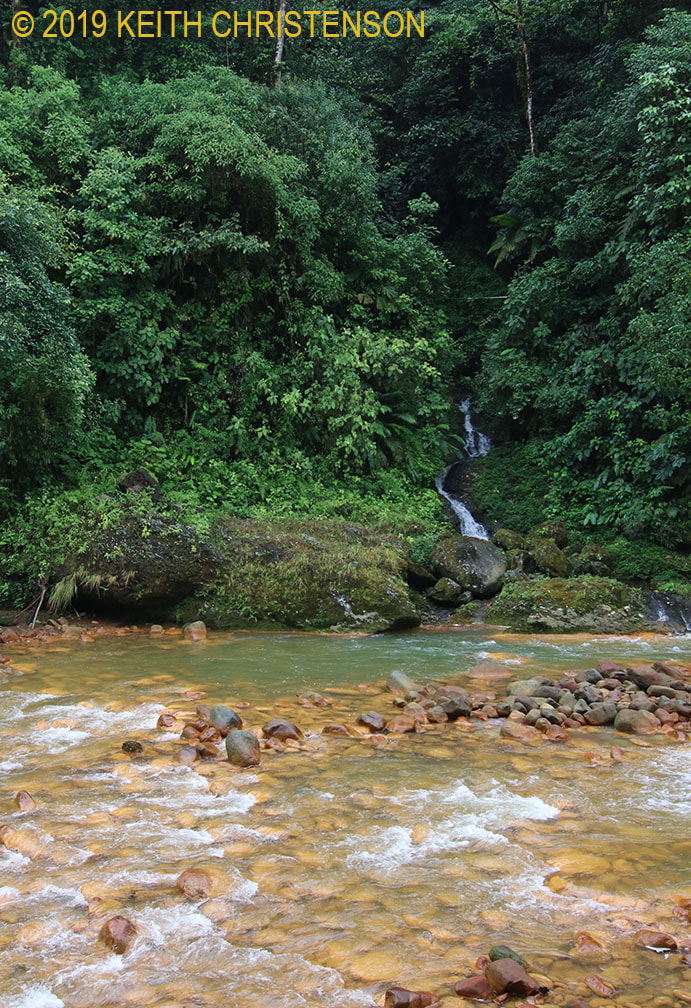
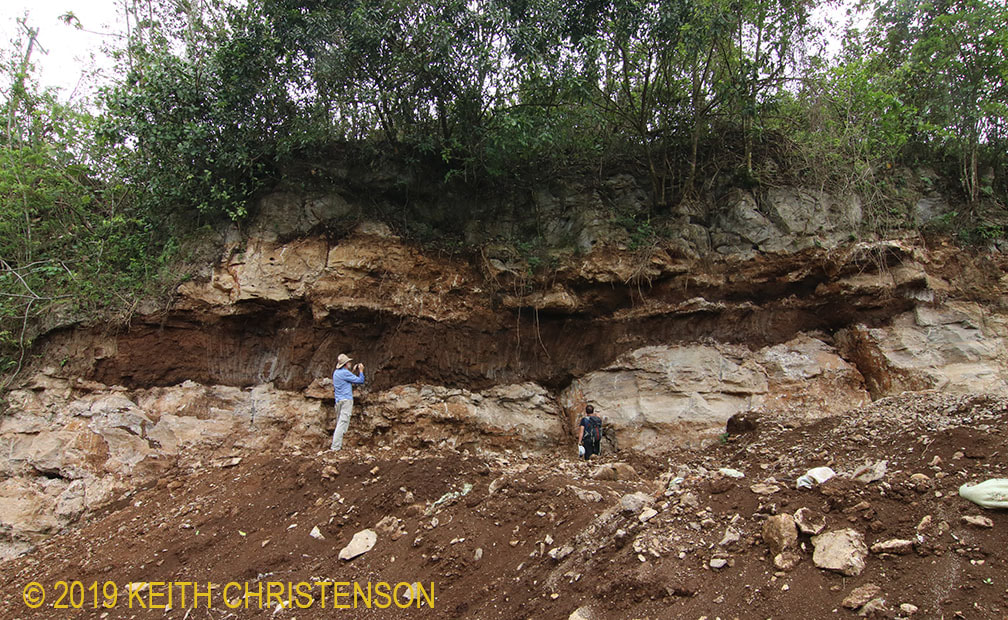
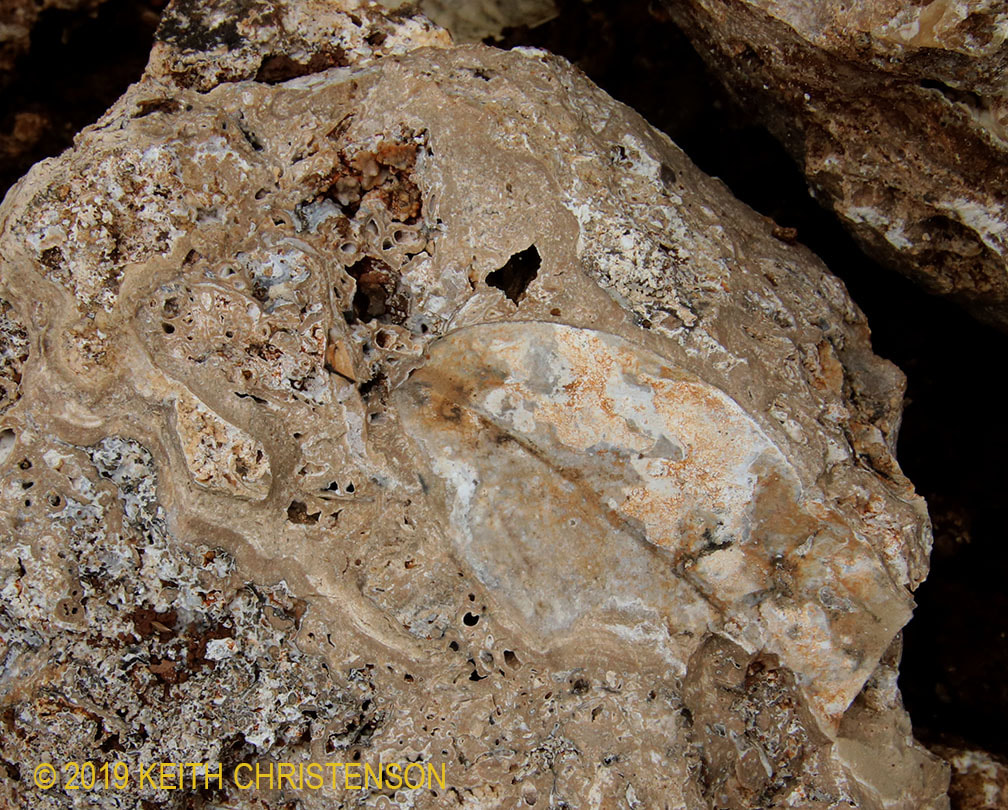

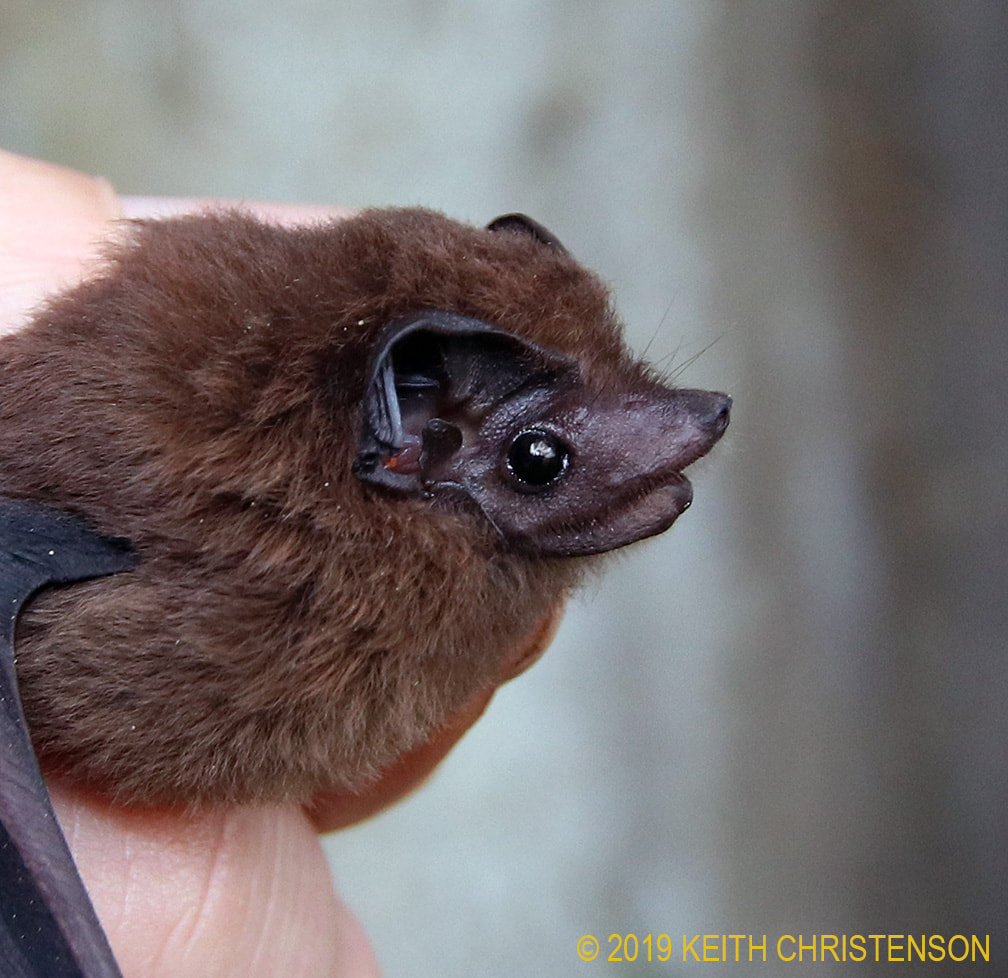
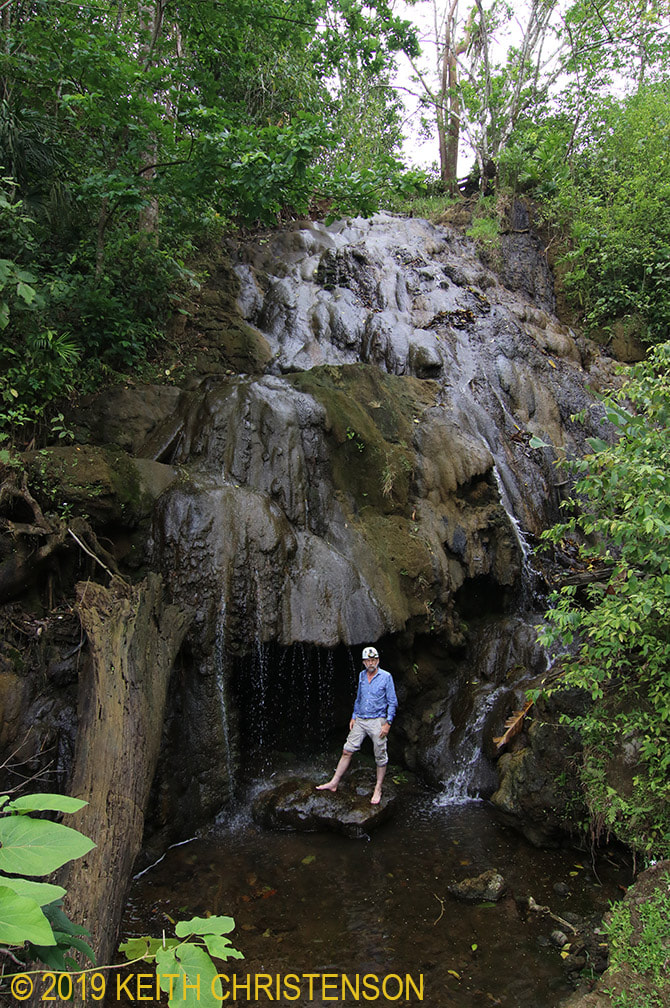
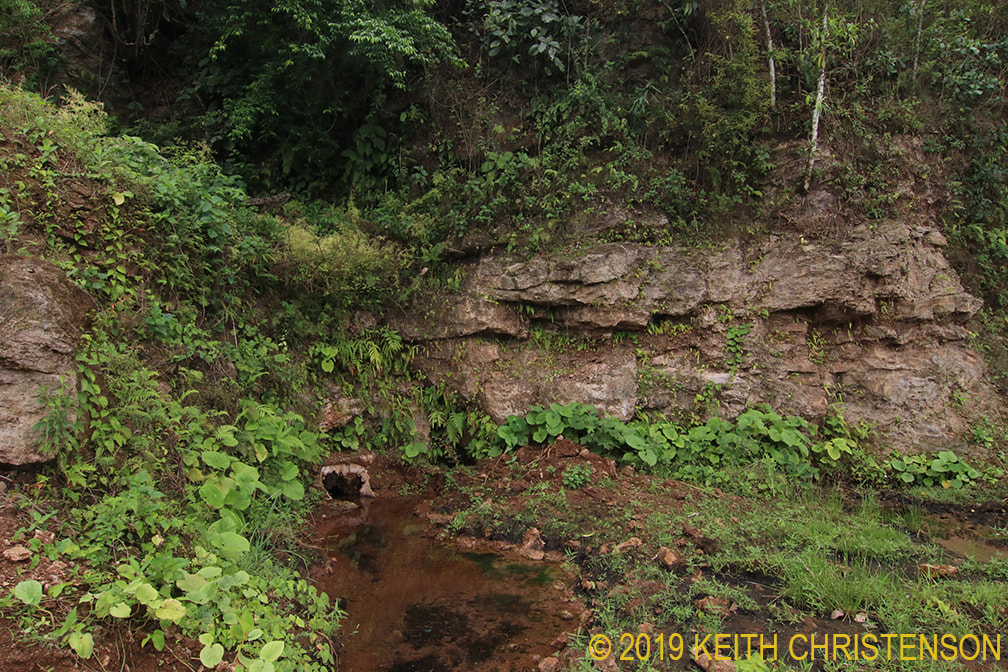
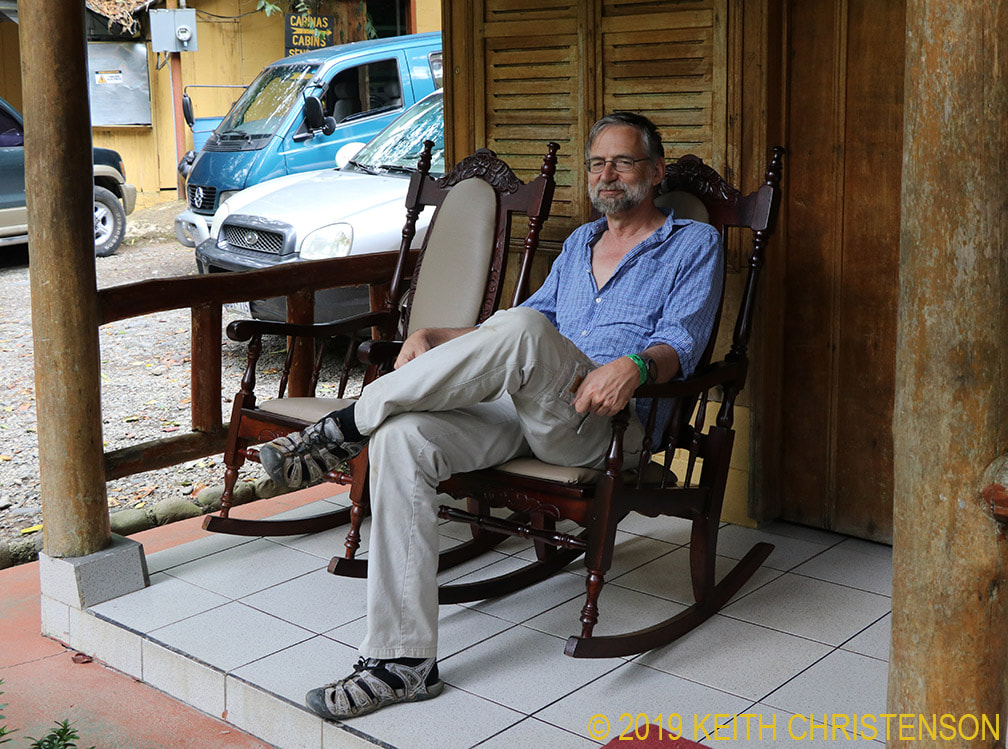
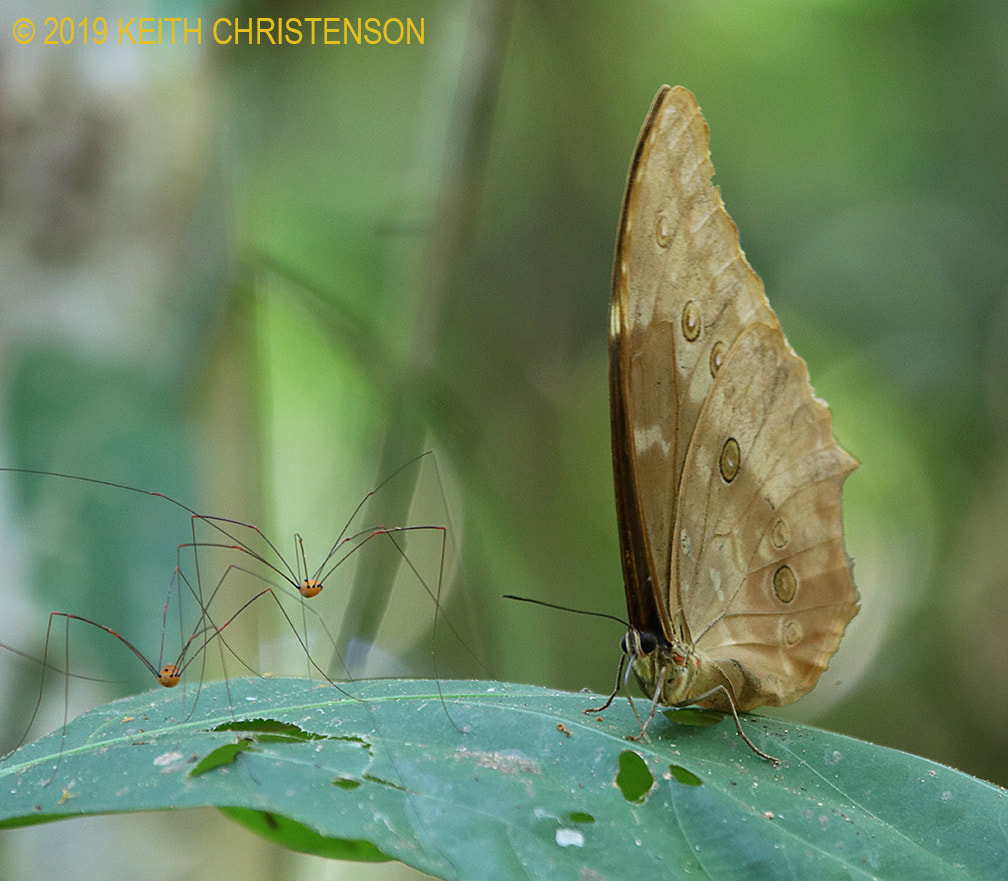
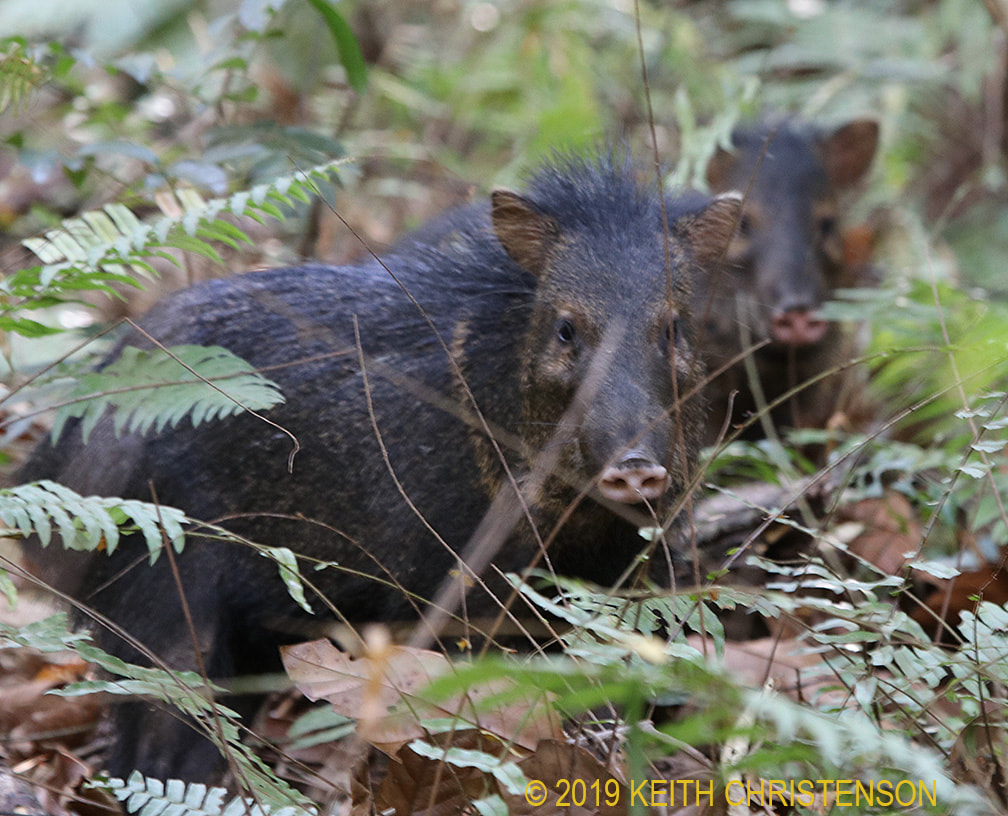
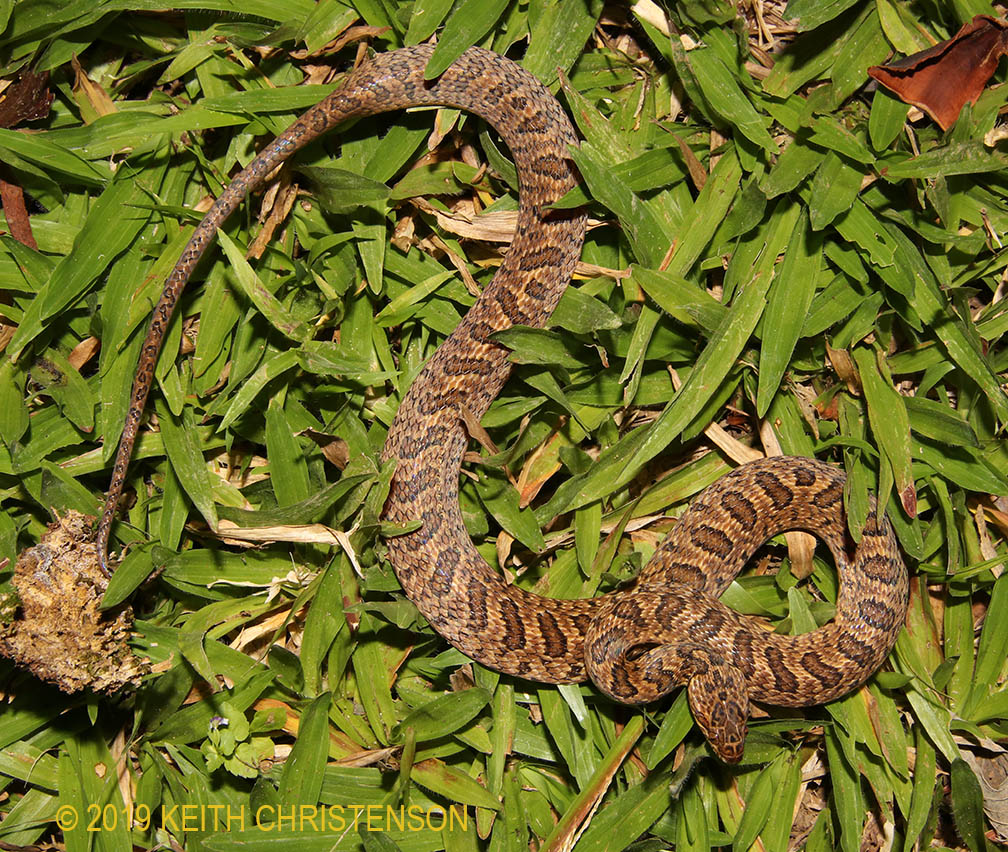

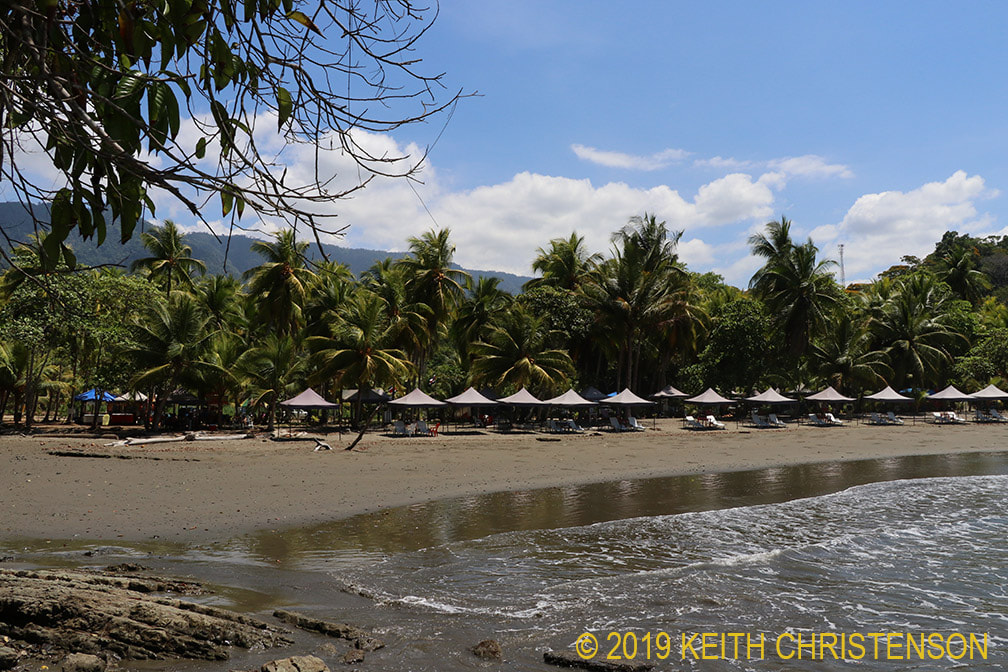
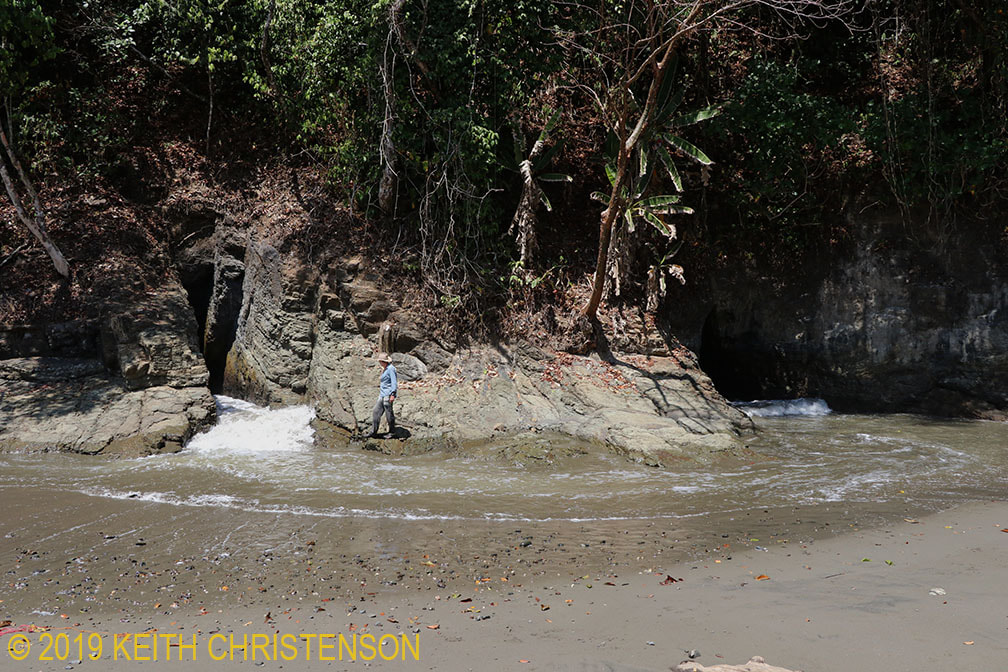
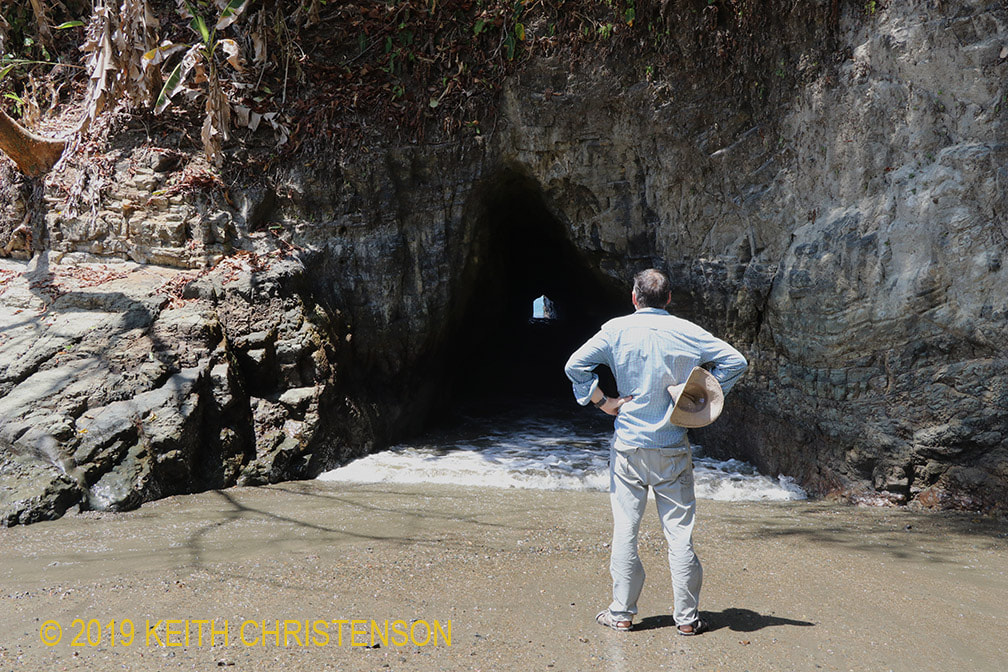
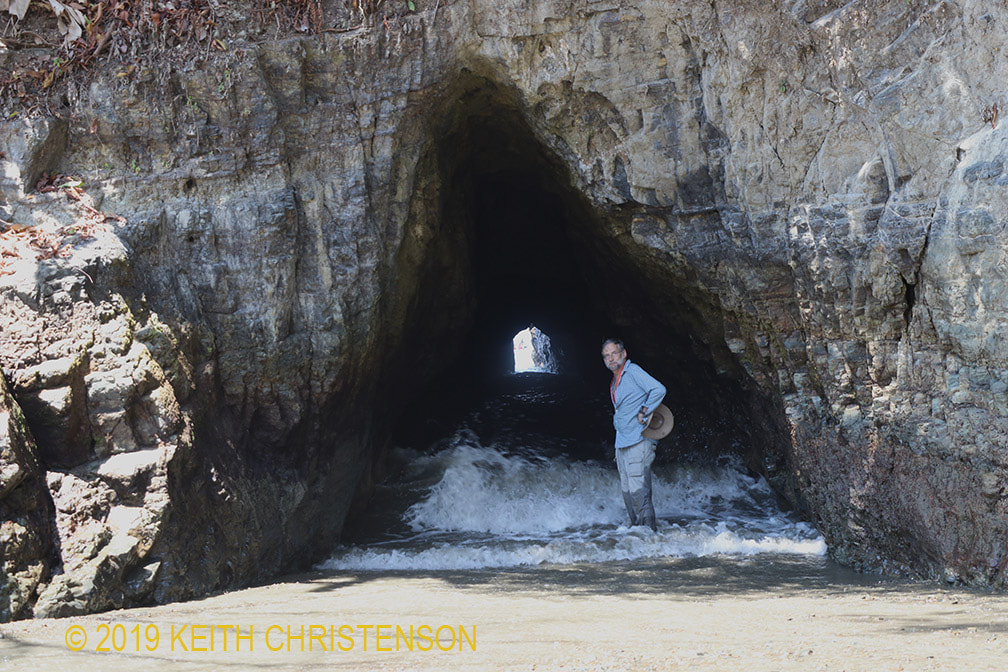
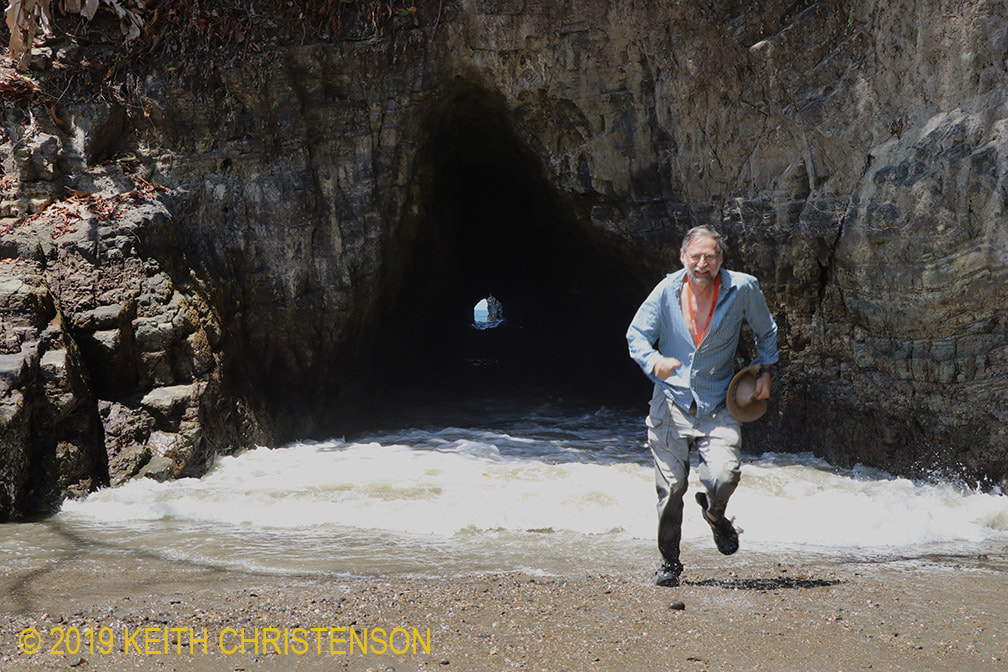
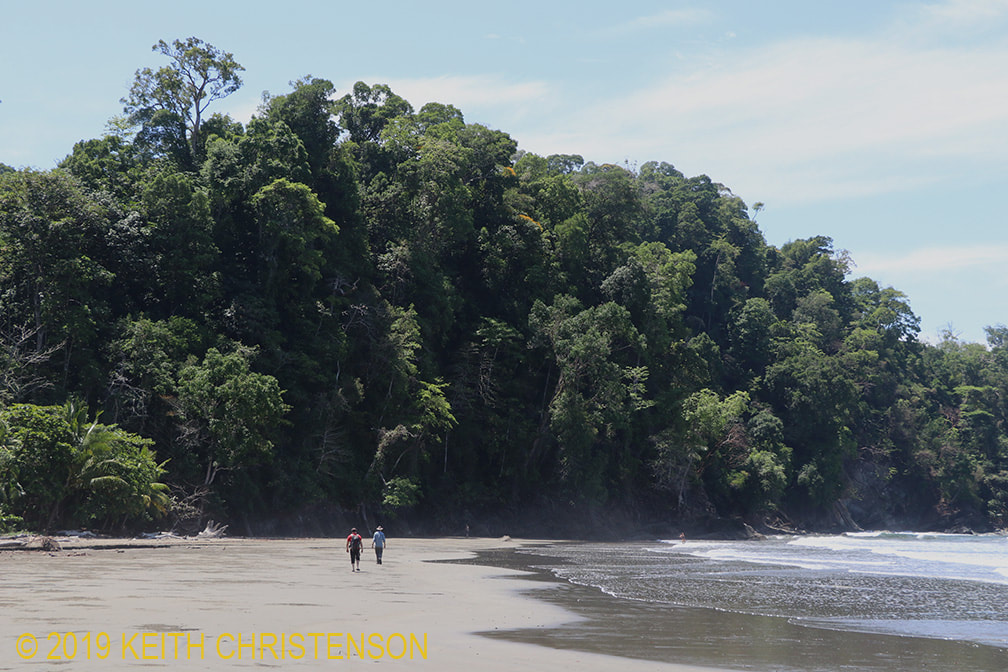
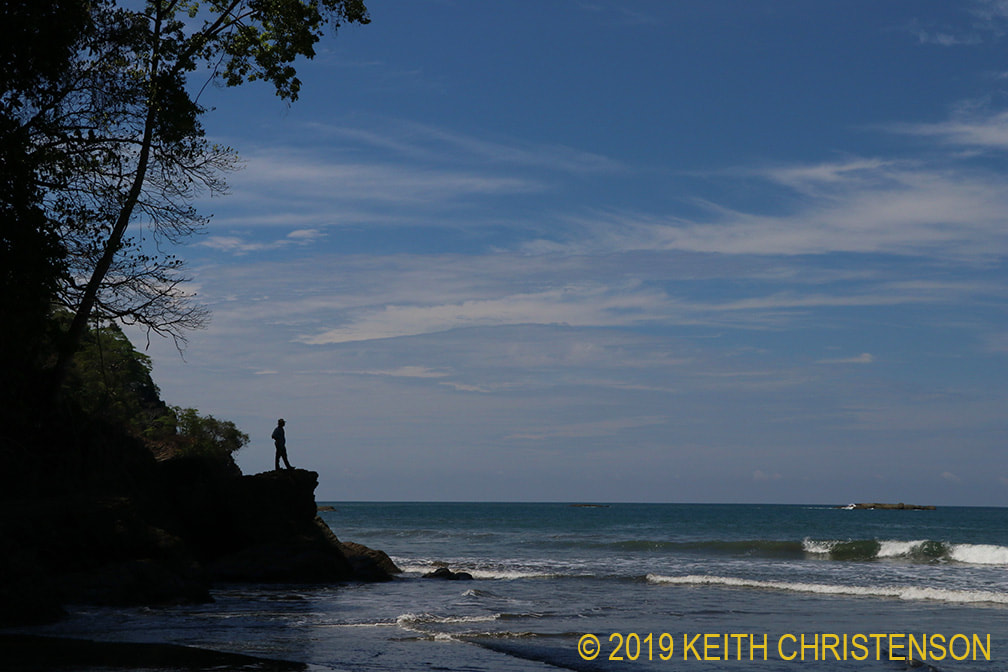
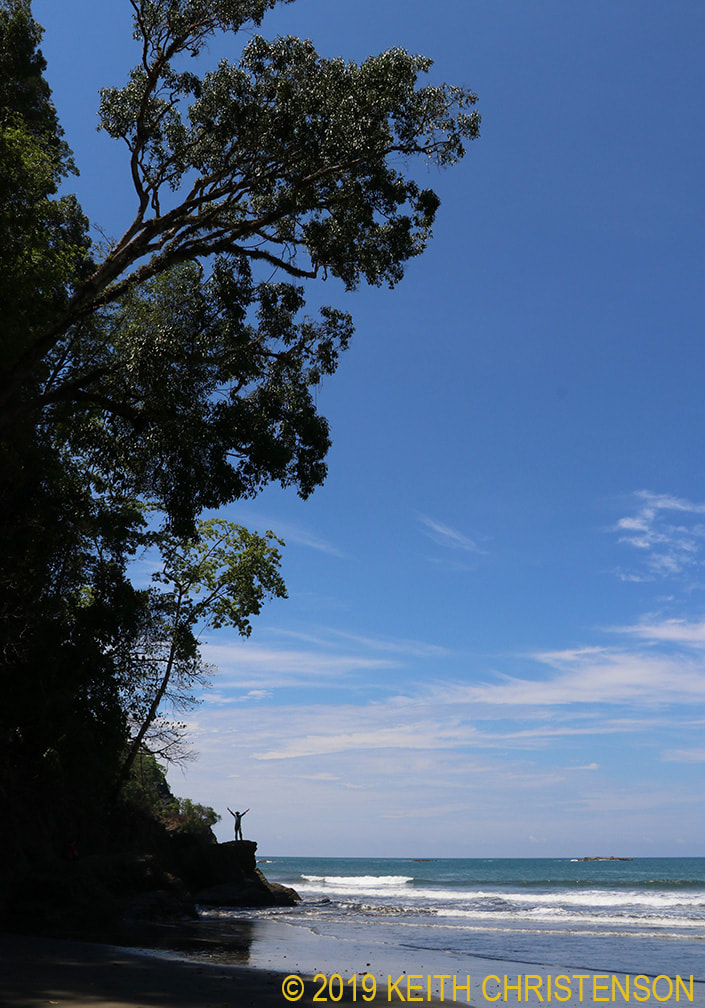
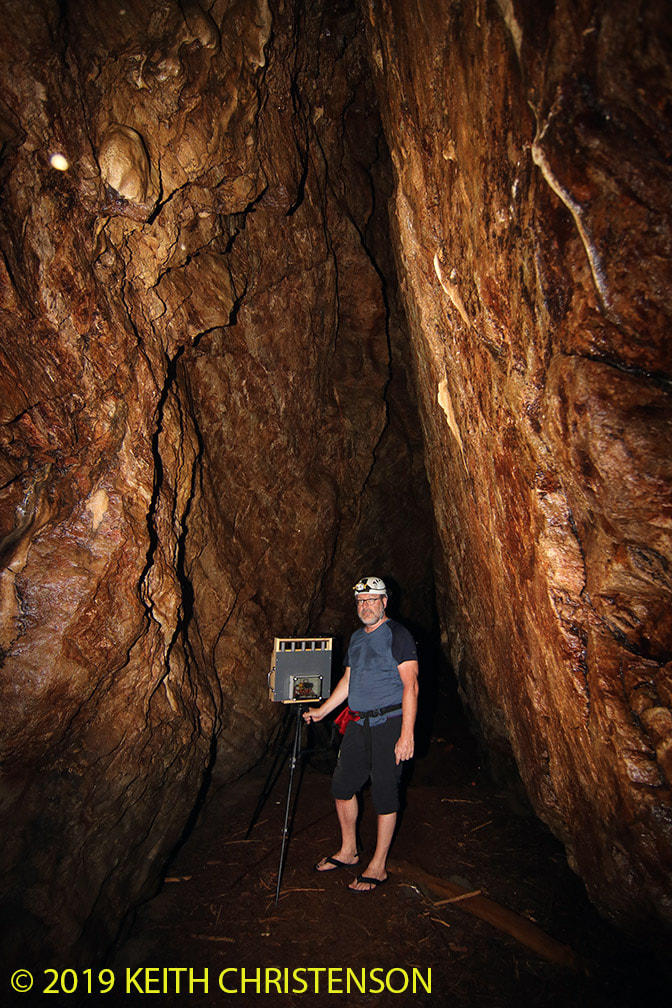
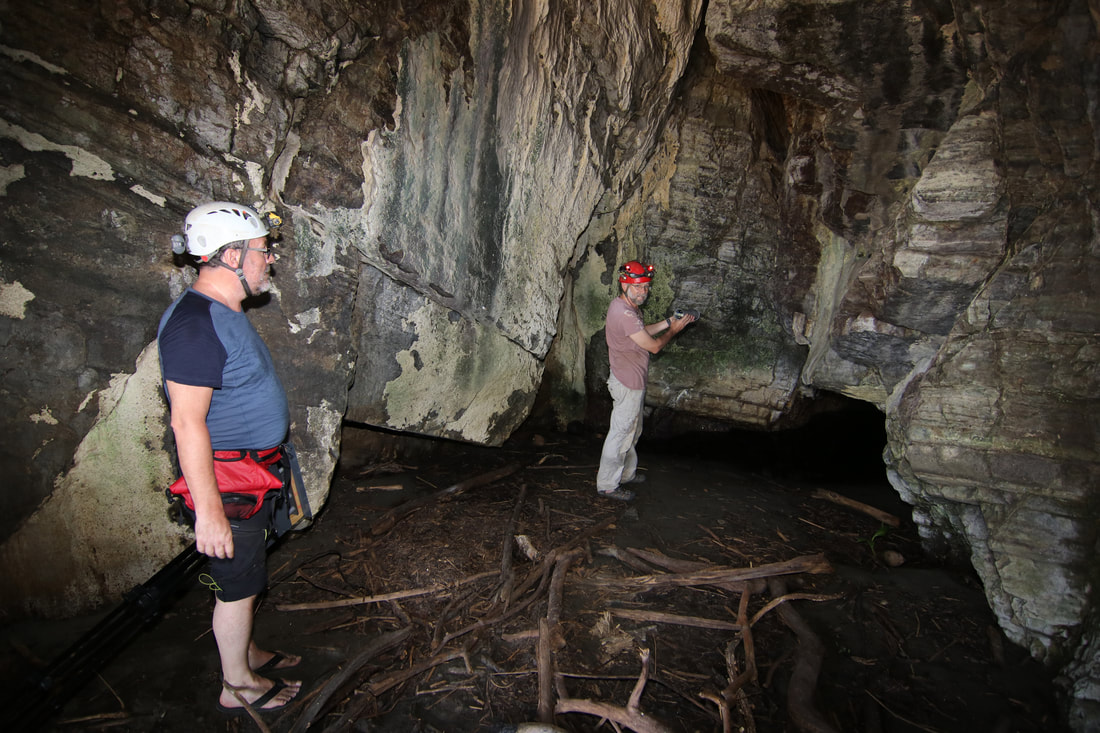
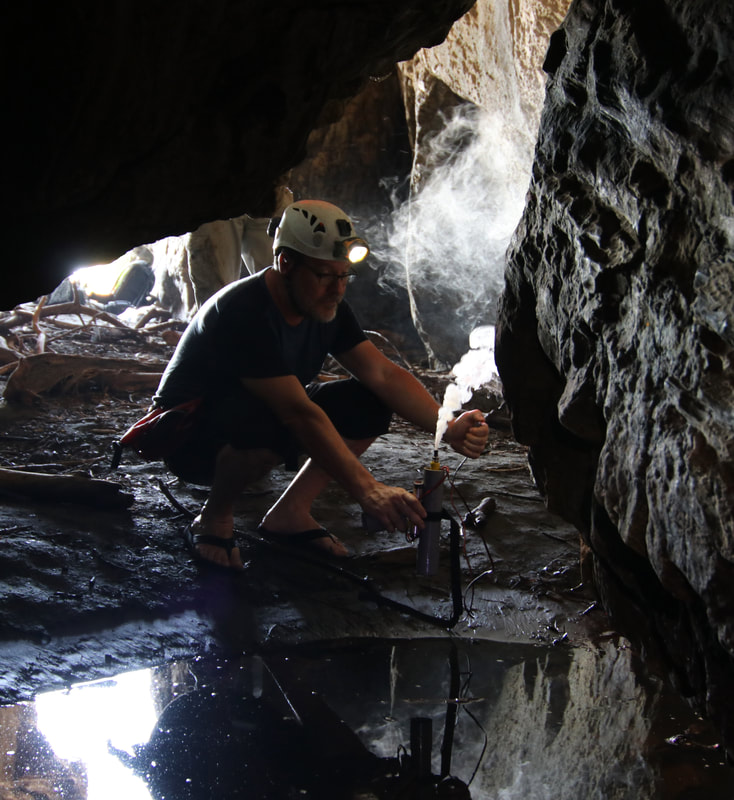
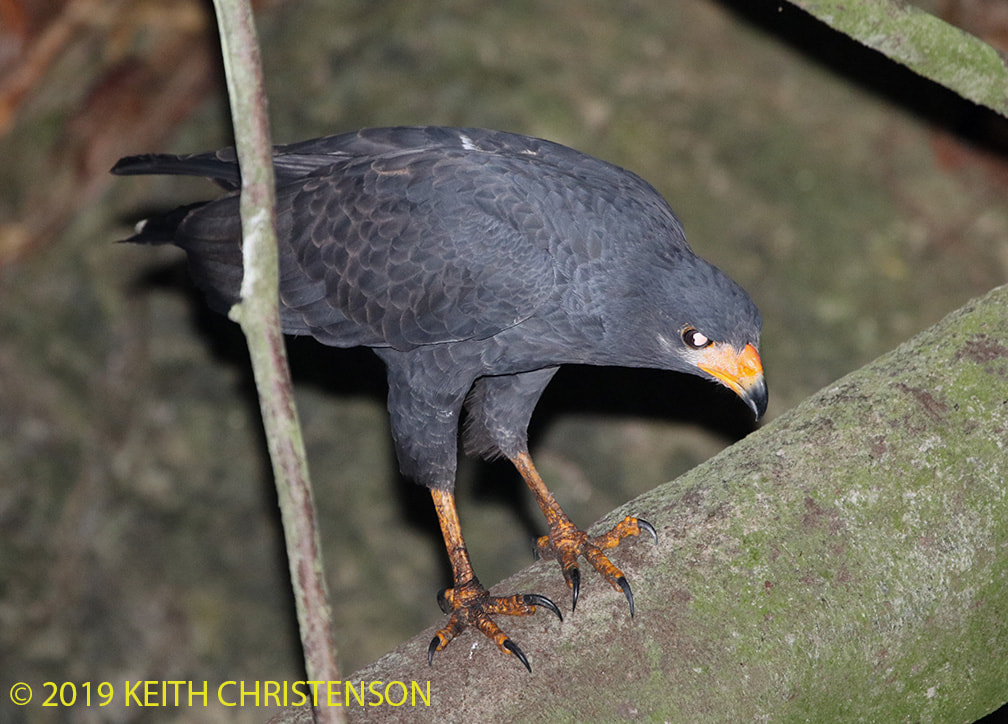
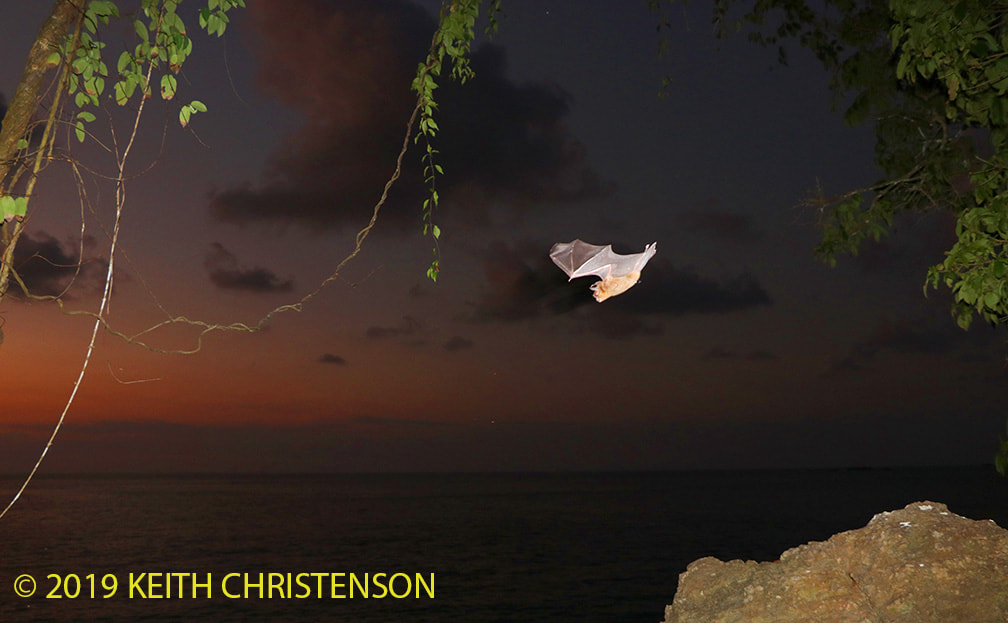
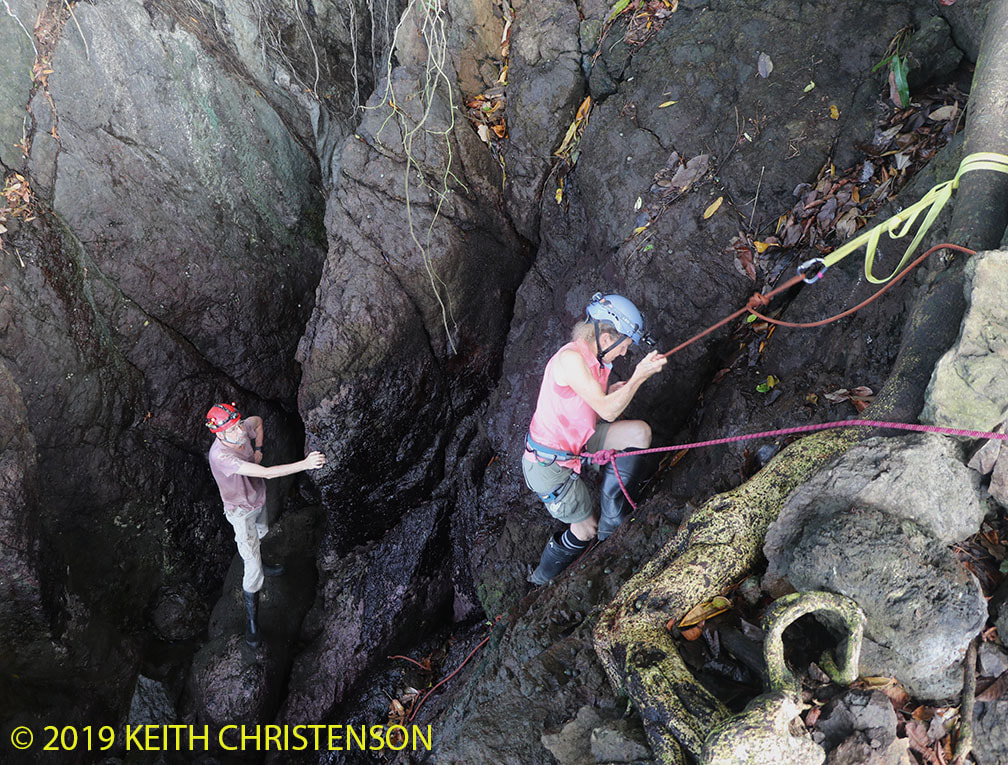

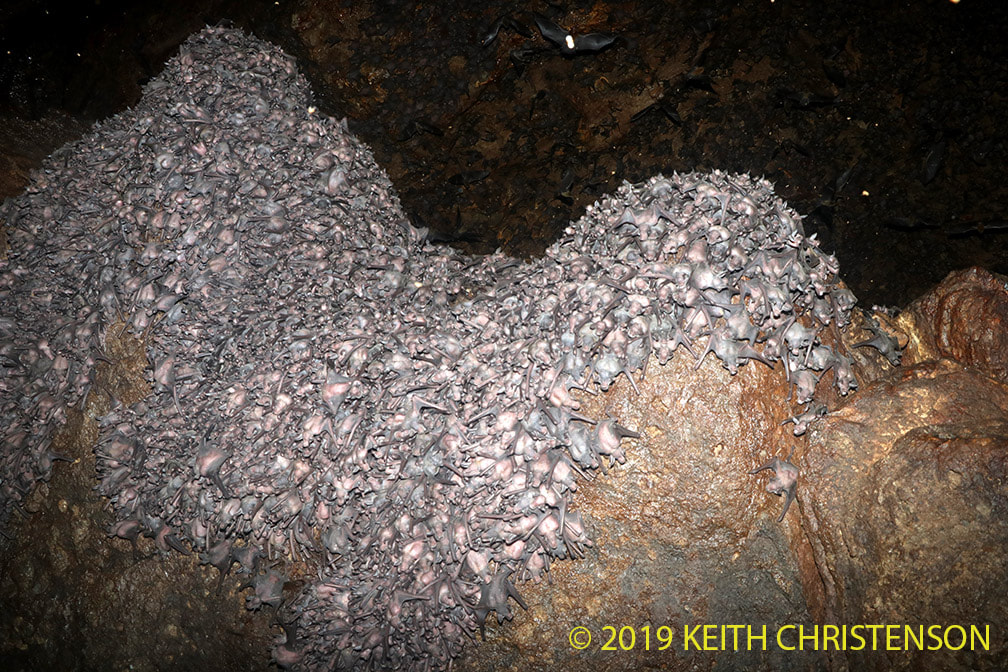
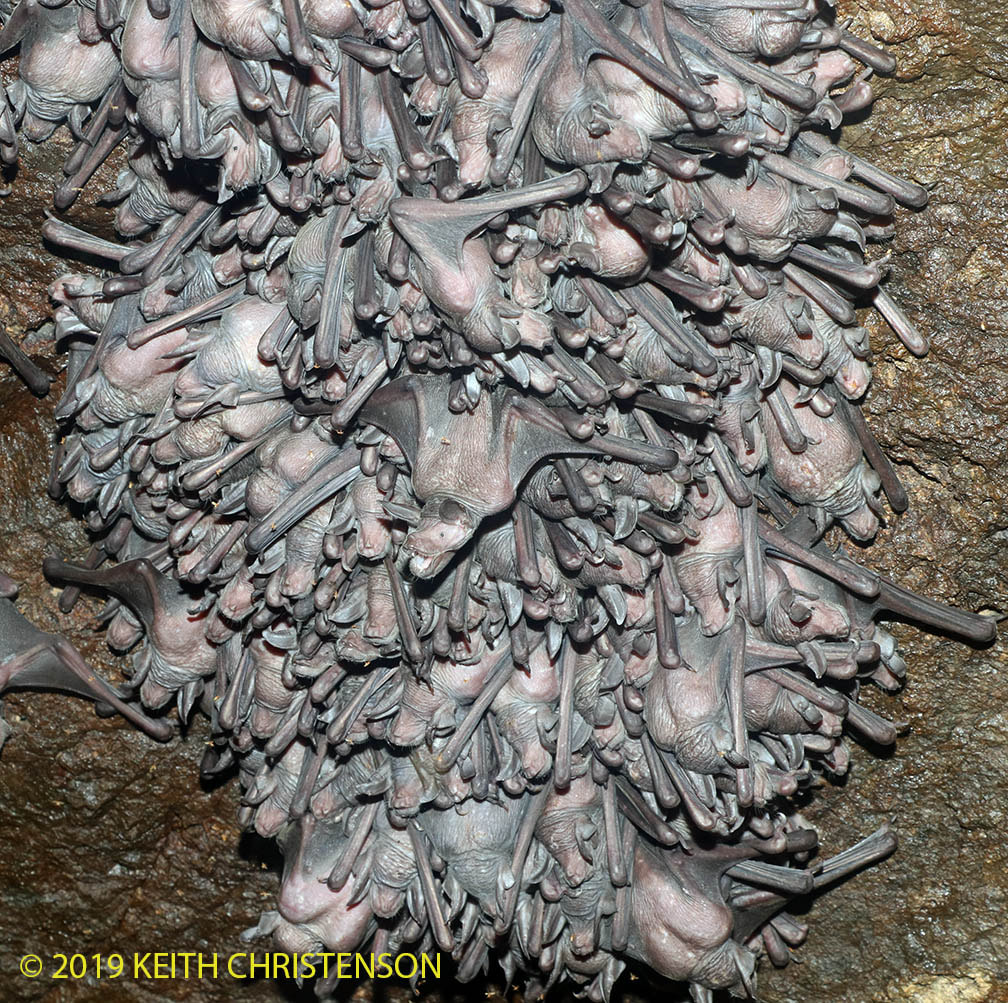
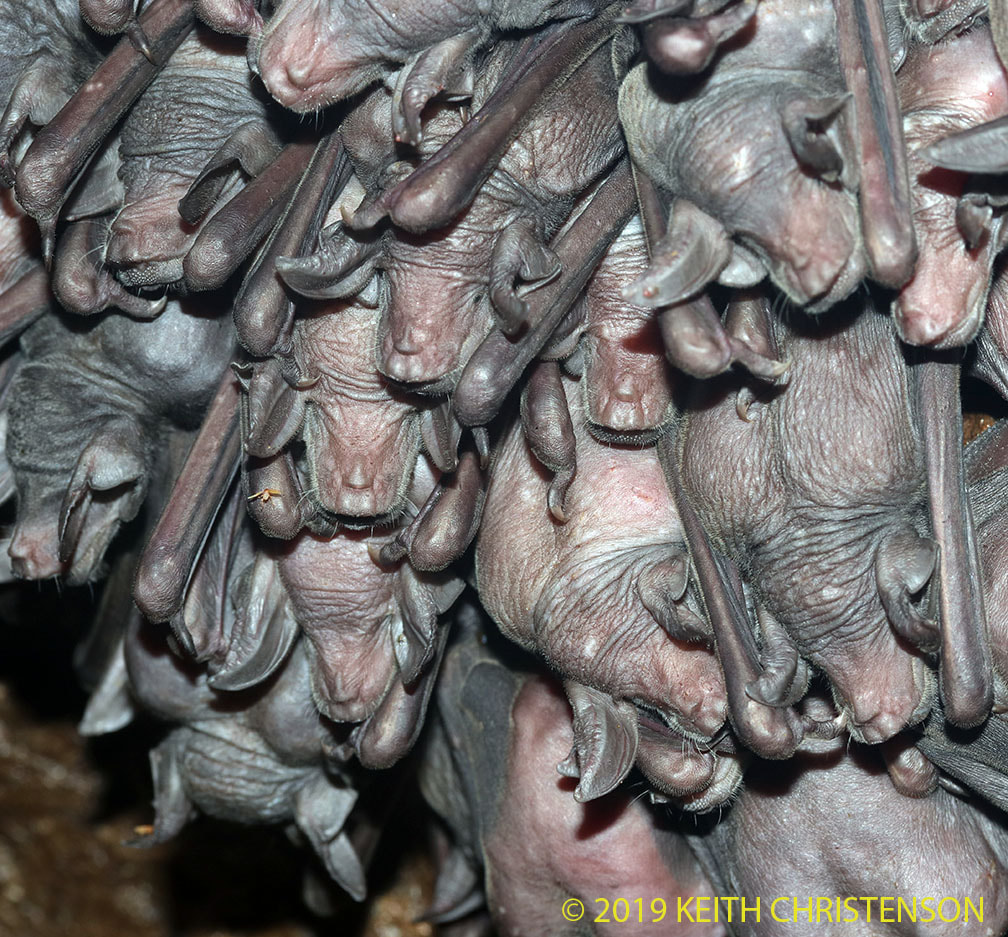
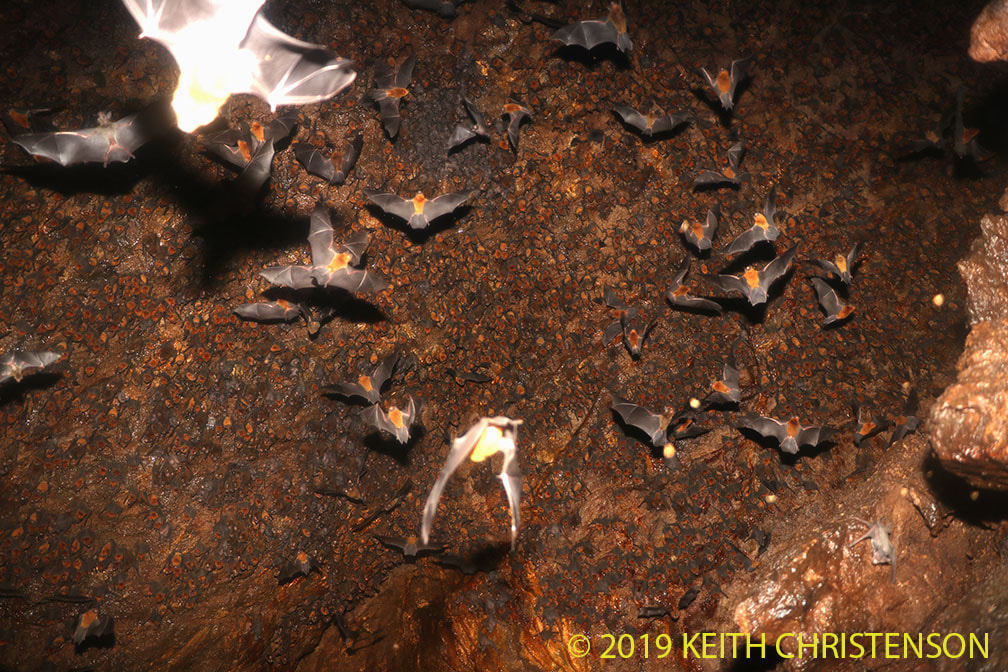
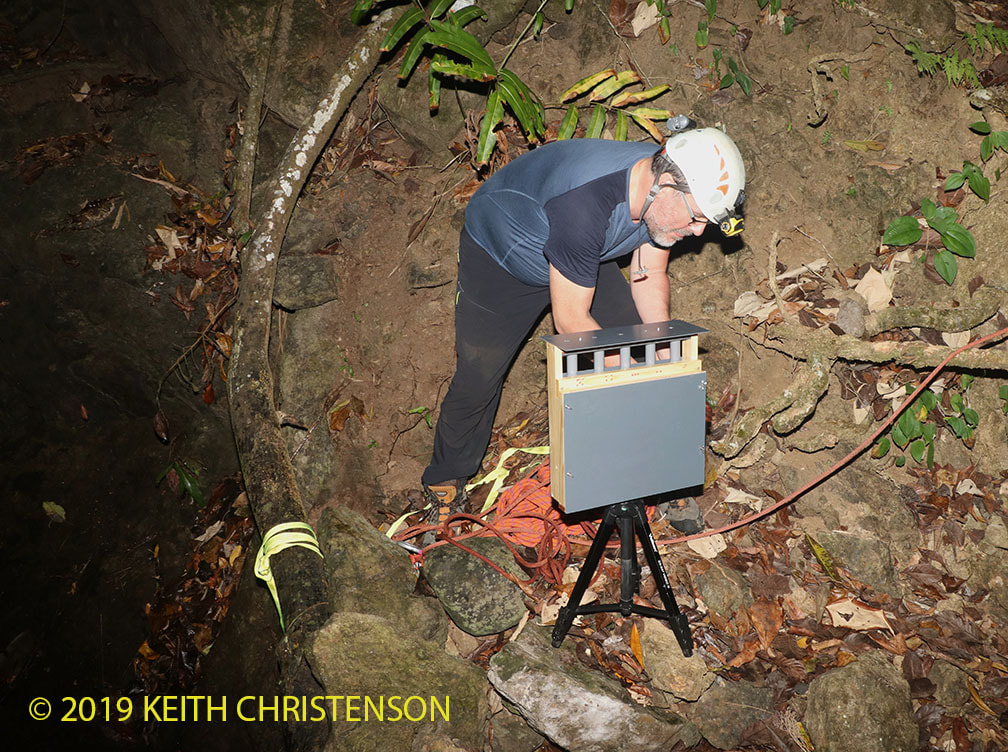
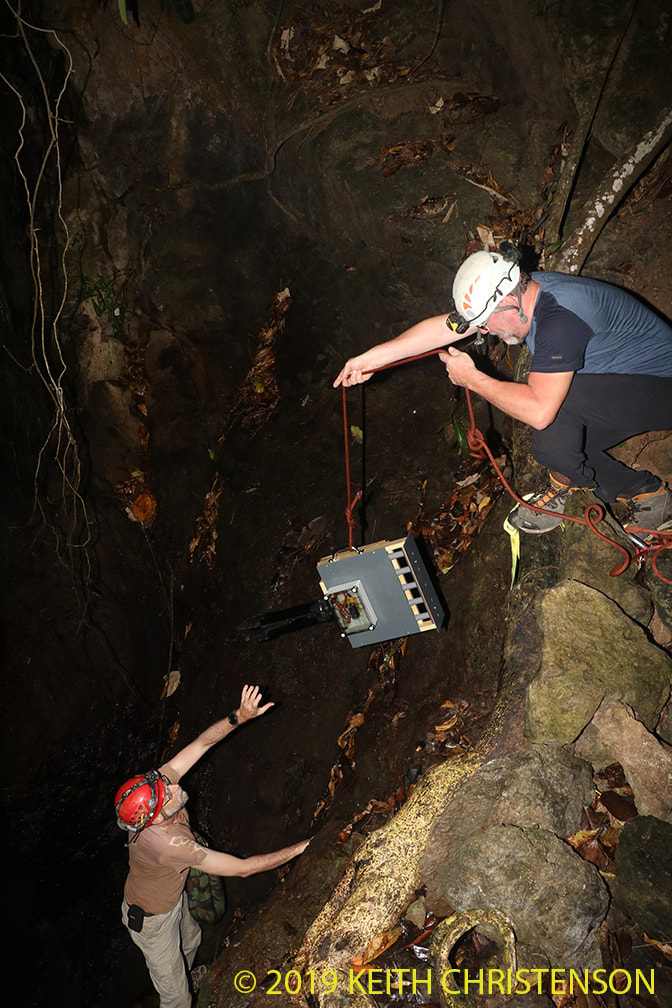
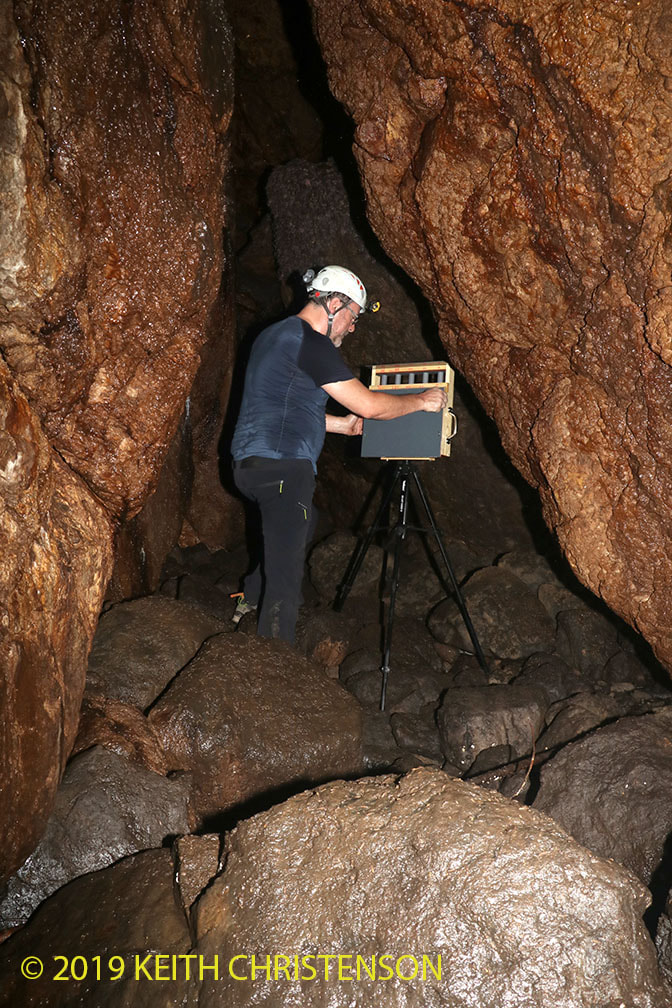
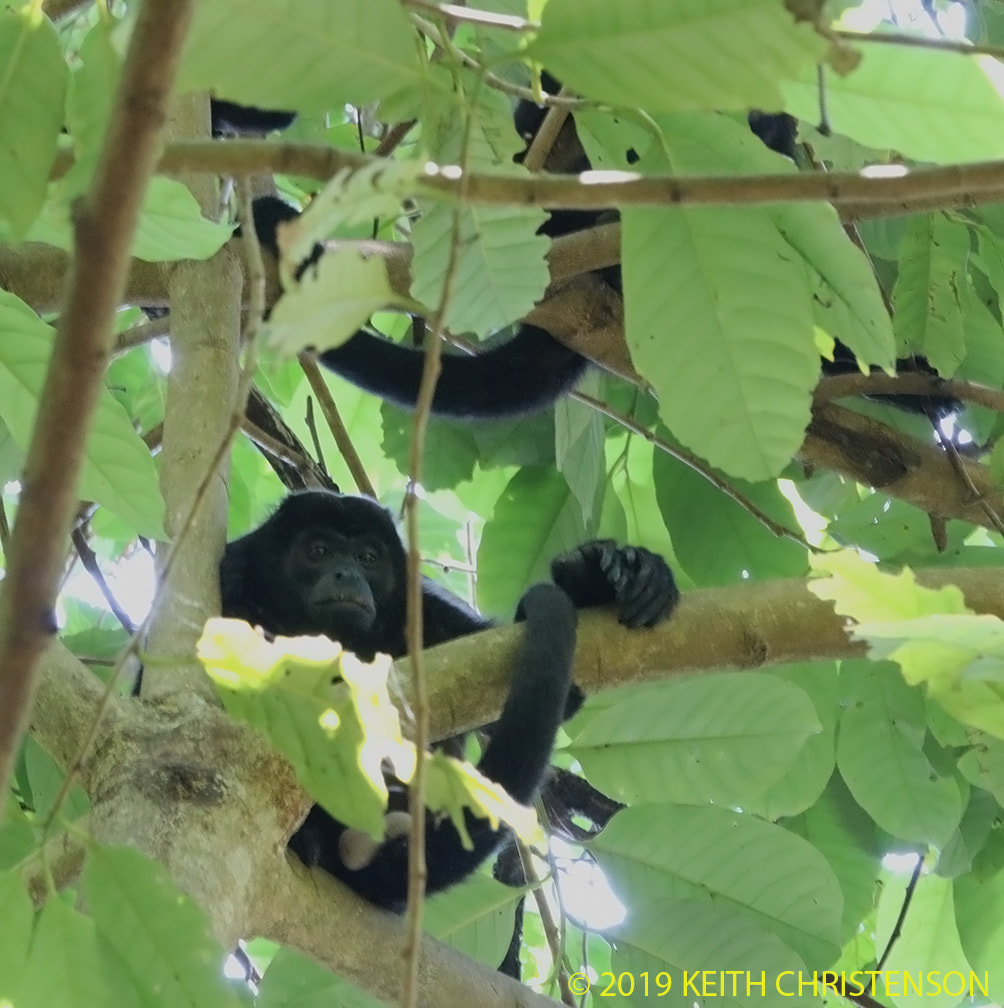
 RSS Feed
RSS Feed